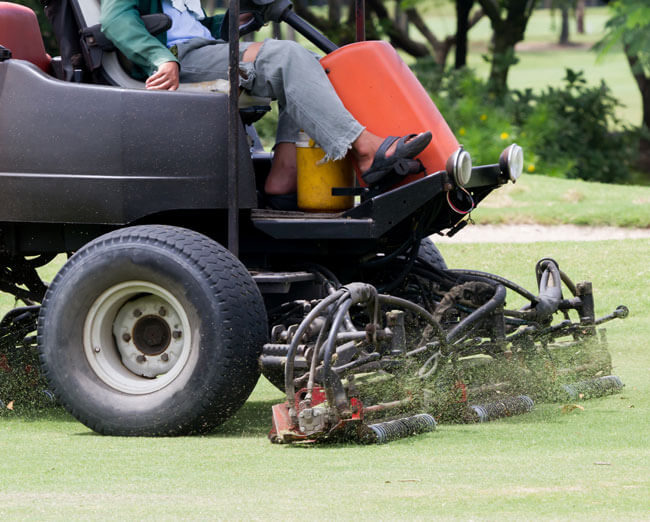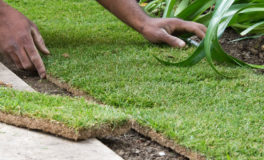How to care for fine turf
What is fine turf and where should I use it?
There are many different types of turf on the market. The term “fine turf” usually refers to the sort of grass one would normally see on golf greens, bowling greens or really smart ornamental lawns.
Fine turf uses grass species that have tiny, slim blades of grass that make a really tight, smooth textured lawn. Species such as Browntop bent, Slender creeping red fescue or Chewings fescue…..or a mixture of all three.
These grasses are the supermodels of the turf world. They look beautiful and do a great job, but they’re also expensive to grow and they’re high maintenance.
Where to use fine turf
This sort of turf isn’t suitable for family lawns, lawns for dogs or areas where it gets a lot of traffic – so definitely not cricket or football pitches. For those areas you need a hardwearing turf such as Jubilee or Garden Lawn.
Where fine turf is good is in gardens where the lawn will be cherished and nurtured; or for bowls greens and golf greens.
Feeding
Fine turf is normally mown really really short. That way it makes a great playing surface for sports such as bowls, golf or croquet, but it does mean that the grass needs a really well managed feeding regime.
Grass uses nutrients from the soil to grow leaves and roots. The more you mow (to keep the playing surface in good condition) the more nutrients the plant needs to replace the leaves you’ve removed.
If it doesn’t have the correct balance of nitrogen, phosphorus, potassium and micronutrients, grass is more likely to get sick. Weak and diseased plants look ugly and don’t make for a good playing surface so it’s important to feed your fine lawn regularly and with the correct formula of plant food.
Mowing
To keep the sward on a fine lawn nice and thick and velvety it needs frequent mowing with a cylinder mower.
Rotary mowers are great for hardwearing lawns but fine grasses need the slicing action of a cylinder mower…….a well-sharpened cylinder mower at that. No blunt blades allowed.

In the growing season, (March – July, then September – November) be prepared to mow your lawn at least 2-3 times a week.
For the rest of the year – you’ll probably need to cut the grass at least once a week unless it’s frosty. Under no circumstances should you step onto a fine lawn when it’s frozen.
Disease control
Unfortunately, these grasses are more prone to disease than hardwearing grasses. Maybe it’s because of the way they’re maintained, maybe it’s because of the way they’re bred, maybe it’s just that disease is more visible on a close mown lawn than on a rough-and-tumble one.
All you can do is make sure the plants are as strong as possible by keeping them well fed; and be vigilant. Keep an eye out for disease and treat it as soon as you see it.
Keeping the mower blades sharp and hygienically clean will also help prevent disease appearing and/or spreading.
Weed Control
Weeds show up horribly in fine lawns. Spot treat them as soon as you see them. A careful maintenance regime that keeps the plants well fed and the sward thick will help to prevent weeds germinating in the first place.
Wear and Tear
These grasses are not ever so tolerant of wear and tear. You won’t want to be playing running games on the lawn very often.
If you need to walk across the lawn regularly – for example to get to the shed or the washing line – think about putting in some stepping stones to relieve the pressure on the grass.
Alternatively, be prepared for regular scarifying, aerating and over-seeding areas that get extra wear and tear.
A good alternative to fine greens turf
If you have the time and energy to care for a fine lawn it can be very rewarding indeed. If you’re not able to put the work in you will be disappointed with the results.
Think carefully. It might be better to opt for a high quality rye-based lawn and look after it well. You can still have a lawn to be proud of but with lower maintenance.
How to service your lawn mower
Save
Save

 Common turfing problems and how to avoid them
Common turfing problems and how to avoid them  Frequently Asked Questions About Newly Laid Turf
Frequently Asked Questions About Newly Laid Turf 

